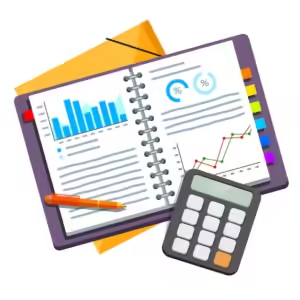Best Balance Sheet Management & Preparation Services
Be aware of your business finances.
A well-arranged balance sheet is a must for your company's financial health when dealing with components like assets and liabilities. During this time, profit and loss sheets track costs to find out your company's expense structure.
At Not Just Website, our team keeps your financial statements updated, allowing you to gain insights into the financial condition of your company and plan decisions based on data for long-term success.

Why Choose Us?
Accurate & Up-to-date Records
Have correct financial statements that display the real financial condition.
Clear Financial Insights
Get a comprehensive view of your profitability and financial soundness.
Strategic Decision-Making
Apply actual data in real-time to forecast and optimize business growth strategies.
Compliance & Reporting
You can maintain accurate records and report taxes on time.
Our services include:
Balance Sheet Preparation
Keep your finances in check by keeping track of the company's assets, liabilities, and equity.
Profit & Loss (Income Statement) Reporting
Be aware of what you have made and spent.
Customized Financial Reports
Access specialized business intelligence solutions.
Regular Updates & Reviews
Monitor the impact of your financial decisions on your business.
Who do we work with?
- Small Businesses & Startups
- Freelancers & Self-Employed Professionals
- LLCs, Corporations & Partnerships
- E-commerce & Online Businesses
- Nonprofits & Professional Service Providers
Hire us to gain financial clarity & take control of your business!

Frequently Asked Questions

How does a balance sheet differ from a profit and loss statement?
A balance sheet gives the financial position at a specific point in time, but the profit and loss statement reports the company’s financial performance over the period.
How regularly do the companies need to revise these financial statements?
Companies are supposed to constantly go through their balance sheets and profit and loss statements in order to evaluate their financial position and make logical decisions.
Why is a balance sheet important in getting loans or attracting investors?
Lenders and investors depend on balance sheets to make decisions about whether a company has positive assets or they are overloaded with negative ones.
What are common mistakes that businesses make when reviewing financial statements?
There are examples such as neglecting minor expenses, classifying the assets incorrectly, not balancing accounts, and not regularly updating statements.

